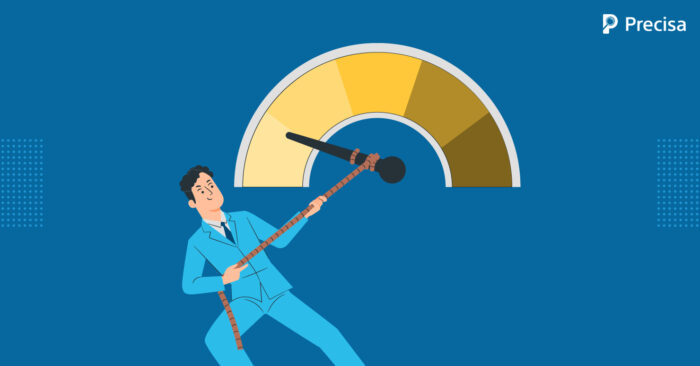How Co-lending Is Fuelling India’s Growth Towards a 5 Trillion-Dollar Economy

Earlier this year, the International Monetary Fund (IMF) projected India to become a five-trillion-dollar economy by 2026-2027. A key factor that will trigger such business growth is India’s accelerated adoption of digital across all sectors and functions – from agriculture and retail to edtech, logistics, and recruitment. Another sector that is undergoing massive digital transformation is the financial services sector. Credit services, in particular, are experiencing a paradigm shift with the co-lending model aiming to disrupt the traditional lending model, which is unable to meet the credit demands of a growing population.
The co-lending model is helping solve the problem of access and scale, with a promise of profitability, to multiple stakeholders. It brings millions of unbanked, underserved demographics into the financial ecosystem and aggressively addresses the credit gaps that stand in the way of India’s five trillion-dollar dreams.
What is the co-lending model?
Under its co-lending guidelines, India’s financial regulator Reserve Bank of India (RBI), allows financial entities such as banks and Non-Banking Financial Companies (NBFCs) to form partnerships and facilitate credit jointly. This model had its genesis in 2018 when RBI announced the “co-origination of loans” by banks and NBFCs. The aim was to drive more funding to “priority sectors” such as agriculture and Micro, Small, and Medium Enterprises.
Priority sectors are those which are underserved but considered critical for the growth of the economy. The adverse financial impact of the pandemic on India’s priority sectors accelerated the adoption of co-lending as a growing model not just by banks and NBFCs, but also fintech, which consider themselves to be the banks of the future.
Gaps in the credit ecosystem
According to a 2021 directive by the RBI, the following sectors have been identified as eligible for priority sector lending (PSL): agriculture; Micro, Small, and Medium Enterprises, Export credit, Education; Affordable Housing; Social infrastructure and Renewable energy.
The additional category “others” comprises self-help groups (SHG) and joint liability groups (JLG) (small groups of individuals united by socio-economic status or occupation).
In 2021, RBI also established a Priority Sector Lending (PSL) target of 40% for domestic and foreign banks with less than 20 branches. While banks have the liquidity to close the credit gap, they lack the digital capabilities and last-mile connectivity to India’s remotest locations. They are more likely to meet such targets through co-lending partnerships.
Closing the credit gaps
The collective power of a fintech’s digital capabilities, the liquidity of Indian banks, and the last-mile connectivity of NBFCs to India’s remote locations and underserved communities make them natural allies in the co-lending model. Such partnerships will form the foundation for India to close the credit gap and achieve the five trillion-dollar economy milestone. Here’s a deeper look at how the co-lending model benefits stakeholders, including banks, NBFCs, fintech, and borrowers.
5 benefits of the co-lending model
In a co-lending model, various players bring unique strengths to the table. The amalgamation of these strengths can help the financial services sector solve the challenges faced by individual players in meeting the credit needs of millions of borrowers. Here’s a snapshot of five benefits of the co-lending model:
Marrying liquidity and reach
NBFCs have traditionally invested in reaching unorganised and underserved segments. Hence, they have a deeper understanding of the needs and challenges of these segments, as well as an established penetration into the remotest parts of the country. Reach will play a key role in meeting the credit needs of the priority sectors, which comprise unorganised, underserved segments. By partnering with banks, NBFCs additionally have access to the legendary liquidity of Indian banks, which can finance the economy several times over. Now, banks have a channel to offer credit to underserved segments in a streamlined way.
Bringing credibility to the co-lending model
A slew of fintechs have risen in the last few years. Despite building digitally superior ecosystems that offer simplified service, customers are hesitant to access their products due to a trust deficit in new-age financial entities. Banks lend a high degree of credibility to credit transactions due to their long-standing guarantee of compliance and high-trust service. Secondly, most fintechs and NBFCs are not authorised to offer financial services as they do not have the necessary banking licenses. Hence, such a partnership is beneficial and essential for fintech to offer legitimate services such as credit access.
Delivering competitive interest rates
Borrowers tend to prioritise the lowest interest rates. This is where banks have an advantage, as they are in a position to offer the cheapest interest rates as compared to NBFCs. Hence, partnerships with banks benefit NBFCs and fintech in terms of bringing competitiveness to the credit offer.
Sharing the risk and rewards
When any financial entity independently lends, they also risk suffering the brunt of losses due to bad debts and non-performing assets. On the other hand, co-lending partnerships enable better risk management as all entities enjoy the benefits of rewards and shoulder losses. For instance, NBFCs also need to be put in 20% of funding. Hence, banks are more confident when serving customers with little or no credit scores, as they will not be solely responsible for shouldering the losses.
Bringing in customer-centricity and digital access
Fintechs are masters of building intuitive, customer-first digital ecosystems that simplify access to financial services – from loans and pre-paid cards to community-led financial literacy. With access to cheaper smartphones and data, customers can enjoy an enhanced banking and credit experience. However, the profitability of fintechs has been limited due to the high customer acquisition costs. By partnering with NBFCs and banks in the co-lending model, fintechs can access newer demographics of customers and bring liquidity into their ecosystems.
The takeaway
With co-lending projected to go mainstream, banks, fintech, and NBFCs will need to sift through millions of bank statements daily to process loans at the pace required to meet the lending needs of millions of consumers. This is where leveraging financial statement analysis software can help them expedite the process efficiently, quickly, and accurately, with reduced manual interventions. Automating bank statement reviews will help co-lending partners focus on bringing scale to their operations, thus fuelling India’s economy towards the 5 trillion dollar milestone.



